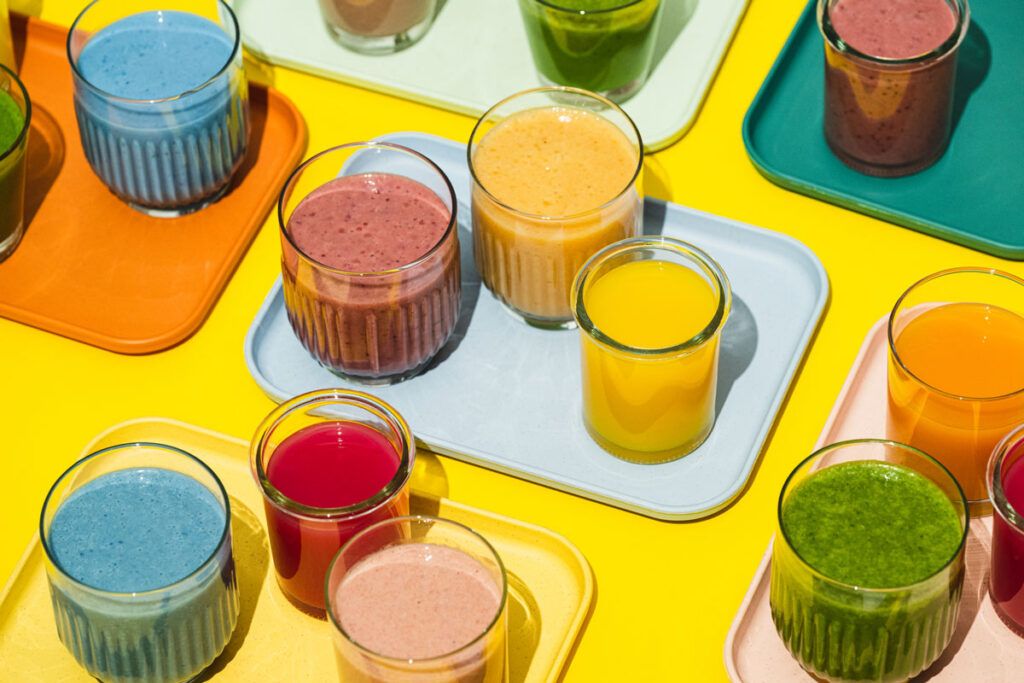Gastroparesis is a chronic condition where the communication between nerves and stomach muscles is compromised. This slows down the movement of food to the small intestine.
Symptoms may include:
- nausea
- vomiting
- stomach cramps
- bloating
- diarrhea
- loss of appetite
- weight loss
- malnutrition
- dehydration
- blood sugar management issues
Though its exact cause remains unknown, gastroparesis is commonly associated with diabetes, certain medications, stomach surgery, and damage to the nerve that connects your brain to many organs (called the vagus nerve).
Foods to eat for gastroparesis

Certain foods may help alleviate gastroparesis symptoms. In general, a liquid diet is recommended, but other options may also work.
A 2022 research review that included six studies found evidence that a low fat diet may reduce post-eating symptoms compared with high fat meals.
The same review concluded that a small-particle diet is better for symptom management than a large-particle diet. A small-particle diet includes foods that are:
- small, like ground or pre-blended options
- soft and easy to thoroughly chew into small pieces before swallowing, like smoothies, soups, and cream of rice
Lastly, the review found that focusing on bland, sweet, salty, and starchy foods may reduce post-meal symptoms of gastroparesis.
Here are some food groups and examples that are low in fat, relatively bland, and may be easier to chew into small particles:
- Lean, ground meats: lean cuts of beef, pork, poultry, fish — especially ground or pureed for easier digestion
- Soft fruits: soft and ripe fruits like bananas, melons, peaches, or canned fruits in juice rather than syrup
- Soft vegetables: well-cooked or canned vegetables like carrots, pumpkin, and peas
- Refined grains: cooked white rice, white pasta, and low fiber bread
- Low fat dairy: milk, yogurt, and cottage cheese, or lactose-free options if you are lactose intolerant
Most people may benefit from these guidelines when they’re experiencing a gastroparesis flare-up. Other people may prefer to follow them even if they’re not experiencing severe symptoms.
Every person’s body is different, and you may be able to add other foods to your diet depending on your tolerance and symptoms.
Foods to avoid for gastroparesis
The 2022 review mentioned earlier found that high fat, spicy, acidic, or fibrous foods may worsen gastroparesis symptoms, even if they are part of a liquid diet.
Examples of these foods are:
- High fat: fried foods, fatty cuts of meat, rich sauces, and snacks like chips or desserts
- High fiber: whole grains, bran, nuts, seeds, and raw fibrous vegetables like kale, artichoke, and onion
- Carbonated beverages: beer, kombucha, soda, and sparkling water
- Spicy: chilies, hot sauce, and jalapenos
- Acidic: citrus fruits, vinegar, alcoholic drinks, and coffee
Which specific foods worsen gastroparesis symptoms may depend on the individual. You may be able to eat some of the foods above with no side effects.
Consider keeping a diary of your diet and symptoms to identify your specific triggers.
Eating protocols for gastroparesis
Treating gastroparesis may involve adopting specific eating protocols to support digestion and symptom management.
Here are some general dietary tips:
- Phased approach: As noted by a 2016 review, low calorie, low fat liquids move through the stomach faster than high calorie, high fat, solid food. If you are recovering from a flare-up, consider starting with a liquid diet before gradually reintroducing solid foods to limit further discomfort.
- Eating position: An older 2006 publication from the International Foundation for Gastrointestinal Disorders (IFFGD) suggests sitting upright or walking for a few minutes after eating to help food move from your stomach to the intestines. This means you should try to avoid eating too close to bedtime when you’ll lie down.
- Frequency and size of meals: A review from 2020 recommends smaller, more frequent meals and snacks instead of three large meals in a day. This may help prevent overfilling the stomach, promote better digestion, and minimize symptoms.
- Focus on chewing: If you are eating a diet that is not fully liquid, the IFFGD emphasizes the importance of thoroughly chewing your food before swallowing. Alternatively, you can experiment with pre-blending or pureeing your meals if you have a difficult time chewing thoroughly enough.
These eating protocols are general guidelines. What works for one person may not work for someone else.
An experienced doctor or registered dietitian, if you have access to one, may help personalize these protocols to your specific needs and preferences.
How is gastroparesis treated?
Depending on the severity and duration of your gastroparesis symptoms, your healthcare professional may:
- investigate and address any underlying causes, like diabetes
- prescribe medications for co-occurring symptoms
- recommend a modified diet
- suggest a feeding tube
- explore whether surgery may be suitable
- recommend alternative treatments, like gastric electrical stimulation or botulinum toxin (Botox) injections
Often, a combination of approaches is more helpful than relying on just one treatment option.
For instance, a 2019 study of 86 people with gastroparesis indicates that combining a modified diet with medication improved symptoms in 58% of participants.
The same 2019 study notes that prokinetic medications are commonly prescribed for gastroparesis. These can help improve stomach contractions and promote gastric emptying. Types include:
- erythromycin (Ery-Tab)
- metoclopramide (Reglan, Gimoti)
- domperidone (Motilium)
In addition to prokinetic drugs, and depending on your individual symptoms and overall health, a doctor may prescribe other gastroparesis treatments and medications.
Options can include digestive enzymes or anti-nausea drugs like:
- ondansetron (Zofran)
- prochlorperazine
- promethazine (Phenergan)
If you need help covering the cost of medications, the free Optum Perks Discount Card could help you save up to 80% on prescription drugs. Follow the links on drug names for savings on that medication, or search for a specific drug here.
